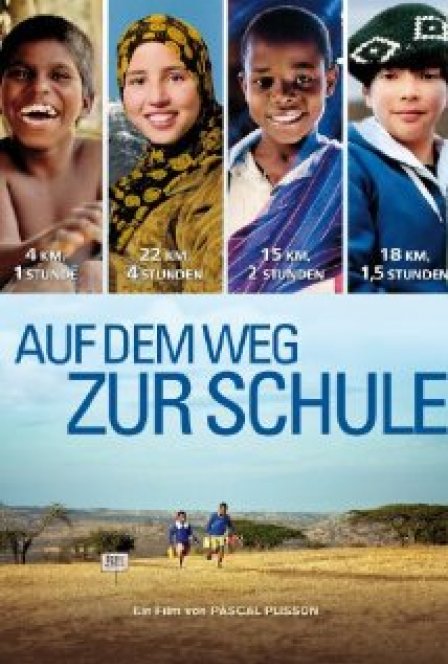There are at least 38 Subway restaurants within 9 miles of my house. In that same radius, there are at least 31 McDonald’s and at least 53 gas stations. So it’s more than a little difficult for me to imagine what it’s like for the children of On the Way to School, who live in secluded rural settings and don’t have easy access to these same “amenities.” See, even if I didn’t have a car and couldn’t hail a cab or find another form of public transportation, I could still walk to these places. But this isn’t a universal thing, and to no one’s surprise, the landscapes of Argentina and Morocco aren’t dotted with Targets or Whole Foods. Sometimes, basic human needs (of which I would argue education is included) aren’t just down the street. Sometimes they’re across the river or over the mountain. But this hasn’t deterred some children from their pursuit of education.
On the Way to School, which was originally produced in France, accompanies four children on the daily trip they take each day to reach school. Jackson is an 11-year old Kenyan student who must dig holes in sand to reach water to wash his school uniform. He and his sister walk nine miles to and from school through a savannah inhabited by aggressive wildlife. Zahira’s journey is the longest at nearly 14 miles. Each Monday she makes the trip through the Moroccan Atlas Mountains to reach her boarding school. Carlos, 11, is from Argentina and aspires to be a veterinarian. He rides 11 miles on horseback to get to school, his younger sister saddled behind him. Lastly, there is Samuel, a wheelchair-bound 13-year old living in India. Lacking the use of his legs, Samuel cannot make the two and a half mile trip to school alone. So his two brothers work together to push and pull Samuel and his wheelchair to their destination. With this daily effort, Samuel wishes to gain the knowledge to become a doctor, so he can help disabled children like himself.
What the doc does right is present the often arduous journeys without any accompanying narration or voiceover. With this decision, the film settles on simply documenting the children’s journeys rather than presenting them as a narrative, and sidesteps any unnecessary heavy-handedness. Yes, these journeys are remarkable, but the children don’t see anything incredible about them, so it’s important that the film communicate that as well. Of course by foregoing narration and voiceover, the film loses the ability to provide the viewer with any context. As the film only details a singular trip for each of the children, we are unsure if they are typical or abnormal. For instance, Zahira meets up with two other girls from her school on her trip, and they repeatedly try to hitch a ride once they reach a small town on the mountain. They are eventually successful, but is this always the case? What if they fail to secure a ride?
While the journeys are for the most part uneventful, they aren’t boring. Director Pascal Plisson keeps things engaging by highlighting small detours and obstacles: Carlos and his sister stop briefly to pray at a makeshift shrine (another moment where context would have been beneficial) while Samuel’s brothers make the mistake of taking a shortcut that involves crossing a knee-high stream, and get Samuel’s wheelchair stuck. In one especially startling moment, Samuel and his brothers talk about making it to America, where “it never rains.” Considering our loud, overbearing nature and our love of force-feeding American culture to other nations, it’s puzzling that America is still a symbol of success and opportunity. How would it make Jackson, Zahira, Carlos, and Samuel feel if they knew that not only does it rain here, but on rainy days we sit inside on the couch, chomping on a McDouble, and watching documentaries about those less fortunate than us?

